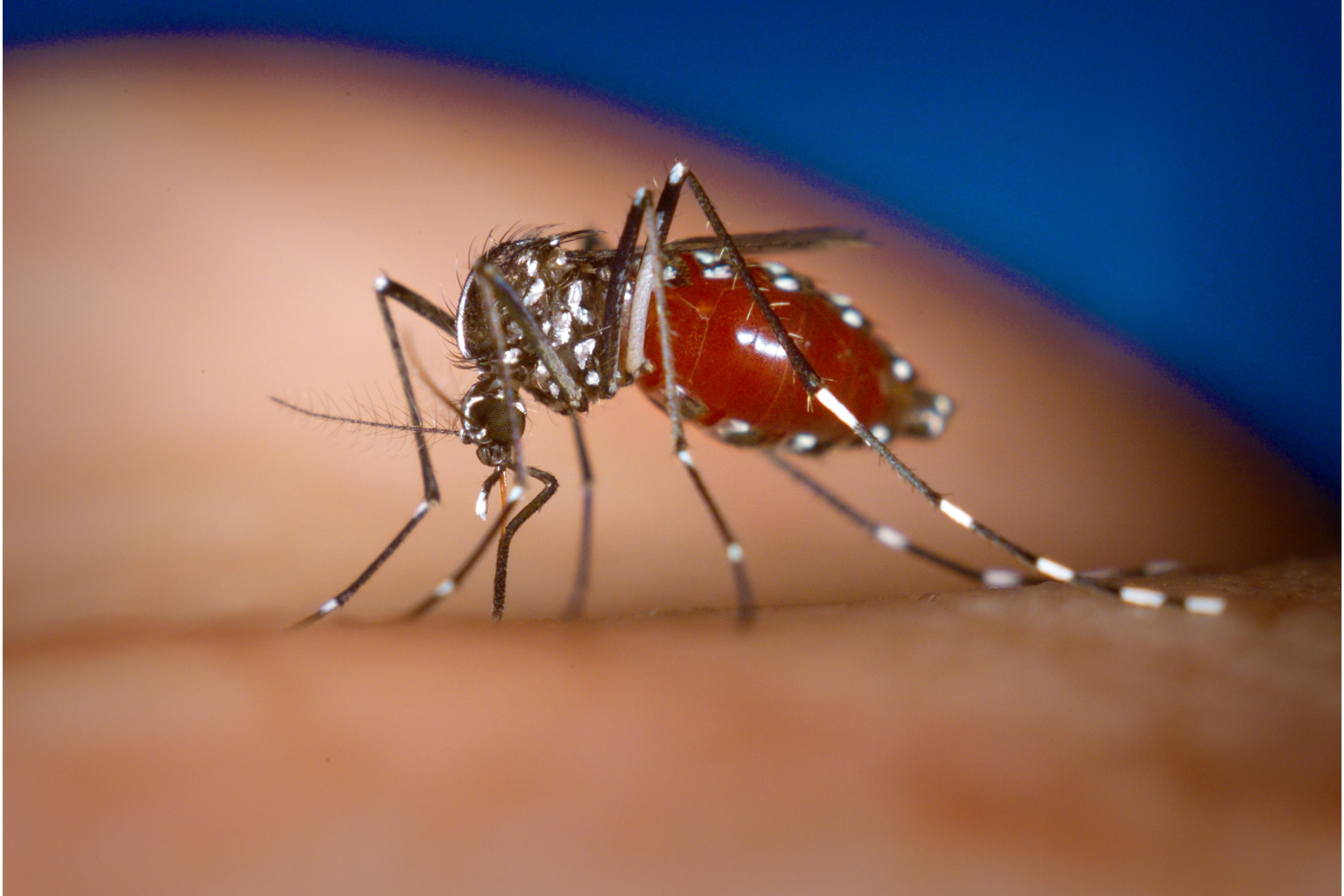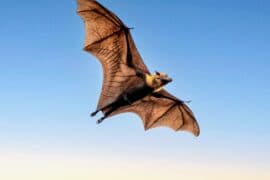Yellow fever mosquito
(Aedes aegypti)

Description
Aedes aegypti, the yellow fever mosquito, is a mosquito that can spread dengue fever, chikungunya, Zika fever, Mayaro and yellow fever viruses, and other disease agents. The mosquito can be recognized by black and white markings on its legs and a marking in the form of a lyre on the upper surface of its thorax. This mosquito originated in Africa, but is now found in tropical, subtropical and temperate regions throughout the world. Aedes aegypti is a 4–7 millimetres (5⁄32–35⁄128 in) long, dark mosquito which can be recognized by white markings on its legs and a marking in the form of a lyre on the upper surface of its thorax. Females are larger than males. Microscopically females possess small palps tipped with silver or white scales, and their antennae have sparse short hairs, whereas those of males are feathery. Aedes aegypti can be mixed up with Aedes albopictus without a magnifying glass: The latter have a white stripe on the top of the mid thorax. Males live off fruit and only the female bites for blood, which she needs to mature her eggs. To find a host, she is attracted to chemical compounds emitted by mammals, including ammonia carbon dioxide lactic acid, and octenol. Scientists at The United States Department of Agriculture (USDA) Agricultural Research Service studied the specific chemical structure of octenol to better understand why this chemical attracts the mosquito to its host and found the mosquito has a preference for "right-handed" (dextrorotatory) octenol molecules.The preference for biting humans is dependent on expression of the odorant receptor AaegOr4.The white eggs are laid separately into water and not together, unlike most other mosquitoes, and soon turn black. The larvae feed on bacteria, grow over a period of weeks until they reach the pupa stage The lifespan of an adult Ae. aegypti is two to four weeks depending on conditions, but the eggs can be viable for over a year in a dry state, which allows the mosquito to re-emerge after a cold winter or dry spell.
Taxonomic tree:







